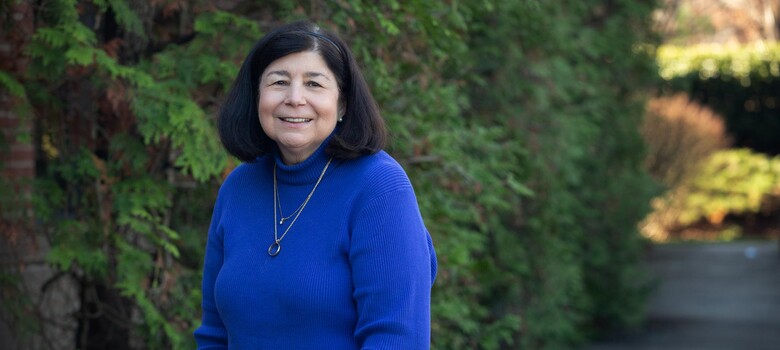Duke Performing Arts Health Program Helps Injured Young Dancer Return to Competition

Kayla Montgomery holds a pose at her dance studio in Apex, NC.
Kayla Montgomery was 14 years old when a hamstring injury nearly sidelined her from a 2021 dance competition. Her mom, Kristen, took her to the Duke Performing Arts Health Program to see Rosie Canizares, a physical therapist who specializes in treating dancers and other performing artists. Within a few weeks, Kayla had strengthened key muscles and was able to participate in her competition. Canizares also taught Kayla how to prevent future injuries so she can dance for years to come.
Small Beginnings and Big Talent
Kayla, who has been dancing since she was three years old, spends 20 hours a week practicing ballet, jazz, hip-hop, contemporary, and other dance styles for dance competitions all over the U.S. Her current dance season includes 13 separate routines, including two solos.
While Kayla was practicing an advanced ballet move, she injured the muscles in the back of her thigh that are collectively called the hamstrings. Rather than take a break, Kayla pushed through the pain.
“Sitting out was like a social stigma for her,” Kristen said about her daughter. “She wanted to try to work through it.”
Push Through or Sit Out?
As a physical therapist herself, Kristen had helped Kayla with pain before. But with a dance competition looming, Kristen knew Kayla needed expert help from someone who specialized in dance injuries. She made Kayla an appointment with Rosie Canizares.
“I was very impressed with her experience with dance,” said Kristen. “As a physical therapist, I understand the joints, the muscles, the systems, but to really know what someone is doing in their activity and to get them back to that requires first-hand experience. That is crucial.”
Right off the bat, Kristen said she could tell that Canizares -- who, like Kayla, started dancing as a toddler -- understood the unique needs of dancers.
“I speak the language and use dance terminology, which makes it easier to communicate,” Canizares said. "Having that background helps me understand dancers' goals and help them return to their functional activities.”
Duke Performing Arts Health Program Offers Specialized Care
At Duke’s Performing Arts Health Program, Canizares partners with physiatrists to offer the full spectrum of care, from conservative options like physical therapy to medication, injections, and even surgical referrals when needed. According to Canizares, the program was established to help dancers like Kayla and other artists get back to doing what they love with less pain.
“A lot of dancers think that some amount of pain is normal, which is not always the case,” Canizares said. “The longer you push through a little bit of pain, the longer it's going to take for you to be 100% pain-free doing what you want to do. You’re doing yourself a disservice if you don’t come in to get evaluated.”
Recognizing the Problem, Rehabbing the Dance Injury
After a comprehensive evaluation, Canizares recognized that Kayla was using her hamstrings to compensate for weaker muscles. Canizares recommended three specific exercises to help Kayla strengthen those muscles and suggested specific ways to reduce pain and help her body recover after dancing.
Within a few weeks, Kayla noticed improvement, just in time for her competition. In addition to helping Kayla overcome her injury, Canizares taught her to use the right muscles so she can prevent similar injuries in the future.
“Kayla knows that dance will be a part of her life for a long time,” Kristen said. “How much a part of her life or what part of her life, she's still deciding, but she definitely sees it as a lifelong pursuit.”





